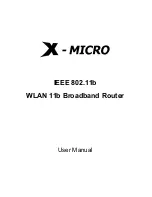
122
The patches that are in RUNNING state are still in RUNNING state after system reboot.
Figure 46
Patches are running
Hotfix configuration task list
Task Remarks
Installing a patch in one step
Install patches
Installing a patch step-by-step
Use either approach.
The step-by-step patch installation allows you to
control the patch status.
Uninstalling a patch step-by-step
Optional
Configuration prerequisites
Patches are released per switch model. Before patching the system, you need to save the appropriate
patch files to the switch’s storage media using FTP or TFTP. When saving the patch files, note that the
following guidelines:
•
The patch files match the switch model and software version. If they are not matched, the hotfix
operation fails.
•
Name a patch file properly. Otherwise, the system cannot locate the patch file and the hotfixing
operation fails. The name is in the format of "patch_
PATCH-FLAG suffix
.bin". The PATCH-FLAG is
pre-defined. The value of the version field (using the
display patch information
command)
represents the PATCH-FLAG suffix. The system searches the root directory of the storage media
(Flash by default) for patch files based on the PATCH-FLAG. If there is a match, the system loads
patches to or install them on the memory patch area. The default name of a patch file is
patch_xxx.bin, and that of a patch file of the slave CPU is patch_lpu.bin.
NOTE:
The loading and installation are performed on all member switches of an IRF fabric. Before these
operations, save the same patch files to the storage media’s root directory of each member switch.
Installing a patch in one step
To install patches in one step, execute the
patch install
command with specifying either the directory
where the patch file locates or the filename of the patch package.















































